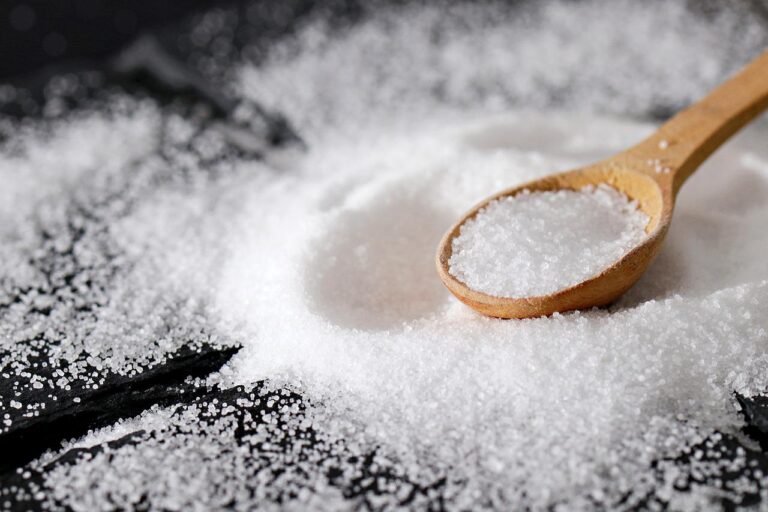What is salt, and how is it made
Salt is a mineral that occurs naturally in seawater and underground deposits. It is composed of two elements, sodium and chloride. Salt can be produced through two main methods: mining and evaporation.
In the mining method, salt is extracted from underground deposits by drilling and blasting. The salt is then crushed, cleaned, and purified. In the evaporation method, salt water is pumped into large shallow ponds and left to evaporate in the sun.
The salt that remains is then harvested and processed. Once the salt is harvested, it can be refined and processed to create different types of salt, such as sea salt, kosher salt, and table salt.
History of salt and its importance in human civilization
Salt has played a significant role in human civilization for thousands of years. Salt was once considered so valuable that it was used as currency in some societies. Early civilizations, such as the Egyptians and the Greeks, recognized the importance of salt in preserving food and used it in religious ceremonies. The Roman Empire was built in part on the production and trade of salt.
Throughout history, salt adds flavor and enhance the taste of food. It was a valuable commodity in medieval Europe and was heavily taxed, leading to widespread smuggling and the creation of salt routes.
In addition to its culinary and economic importance, salt has also played a crucial role in human health. Sodium, which is found in salt, is necessary for proper bodily function, including regulating fluid balance and maintaining healthy blood pressure.
Today, salt is readily available and affordable, but it remains an essential component of our diets and daily lives.
Types of salt

These salts include rock salt, sea salt, kosher salt, and table salt, among others.
- Rock salt is typically mined from underground salt deposits and is often used for deicing roads and sidewalks during the winter.
- Sea salt is made by evaporating seawater and is often used as a finishing salt for its coarse texture and unique flavor.
- Kosher salt is a coarse-grained salt known for its ability to adhere well to food, particularly meat, and is commonly used in Jewish cuisine.
- Table salt is the most commonly used salt and is typically iodized to prevent iodine deficiency. It is finely ground and has a uniform texture, making it a popular choice for cooking and baking.
How much salt should be consumed in a day
The American Heart Association recommends consuming no more than 2,300 milligrams (mg) of sodium per day, which is about 1 teaspoon of salt. However, they also suggest that an ideal limit would be around 1,500 mg per day for most adults, especially for those with high blood pressure, diabetes, or kidney disease.
It’s always a good idea to consult with your doctor or a registered dietitian to determine the amount of salt intake that is appropriate for your individual needs.
Health benefits and risks of consuming salt
Salt is an essential nutrient that helps regulate fluid balance and aids nerve and muscle function. However, consuming too much salt can lead to health problems, such as high blood pressure, which increases the risk of heart disease and stroke.
On the other hand, consuming too little salt can also have negative effects on health, such as dehydration, electrolyte imbalances, and even cognitive impairment. It’s important to maintain a balance and consume salt in moderation.
Read More:
Uses of salt in cooking
Salt is one of the most widely used ingredients in cooking. It is used to enhance the flavor of food, balance other flavors, and even preserve food. Here are some common uses of salt in cooking:
1. Seasoning: Salt is often used to season dishes and bring out ingredients’ natural flavors. When used in moderation, it can enhance food taste and make it more enjoyable.
2. Preserving: Salt has been used as a preservative for thousands of years. It works by drawing moisture out of food, which inhibits the growth of bacteria and other microorganisms that can spoil food.
3. Brining: Brining is a process in which food is soaked in a saltwater solution before cooking. This process helps to tenderize the meat and infuse it with flavor.
4. Curing: Salt is also used in curing, which is a process of preserving meat or fish by rubbing it with salt and other seasonings. This helps to preserve the meat and give it a unique flavor.
5. Baking: Salt is the most essential and basic ingredient in baking, as it helps to activate the yeast and improve the texture of bread and other baked goods.
Overall, salt is a versatile ingredient that is used in a wide variety of dishes and cooking techniques. However, it’s important to use it in moderation and be mindful of your salt intake for the sake of your health.
Alternatives to using salt in cooking
While salt is a crucial ingredient in cooking, many alternatives can be used to add flavor to dishes. Here are some common alternatives to using salt in cooking:
1. Herbs and Spices: Herbs and spices are a great way to add flavor to dishes without relying on salt. Fresh herbs like basil, parsley, and cilantro and spices like cumin, paprika, and turmeric can add unique flavors to dishes.
2. Lemon and Lime: Adding a squeeze of lemon or lime juice to a dish can help brighten the flavors and add acidity, which can be a great alternative to salt.
3. Vinegar: Vinegar, particularly apple cider and balsamic vinegar, can add depth and flavor to dishes without relying on salt.
4. Garlic and Onion: Garlic and onion are flavorful ingredients that can add depth and complexity to dishes. They can be used fresh or cooked to add flavor.
5. Soy Sauce: Soy sauce is an alternative to salt, as it adds a salty flavor and can be used in a wide range of dishes.
Many alternatives to using salt in cooking can add flavor and depth to dishes. By incorporating these alternatives into your cooking, you can reduce salt intake while enjoying delicious and flavorful meals.
How to store salt to maintain its quality
To maintain the quality of salt, it is important to store it properly. Here are some tips on how to store salt:
1. Keep it dry: Salt can absorb moisture from the air, which can cause it to clump together and degrade in quality. To prevent this, store salt in an airtight container in a dry place.
2. Avoid exposure to light: Light can cause salt to lose its flavor and color. Therefore, store salt in a dark place such as a pantry or cupboard.
3. Keep it away from heat: Heat can cause salt to clump together and lose its quality. Therefore, it’s important to keep salt away from heat sources, such as stoves or ovens.
4. Use a salt cellar: If you prefer to keep salt on your kitchen counter for easy access, consider using a salt cellar. This is a small container with a lid that is designed to keep salt dry and prevent it from clumping.
By following these simple tips, you can ensure that your salt stays fresh and flavorful for longer periods.
How to reduce salt intake in your diet
Reducing salt intake in your diet can have many health benefits, such as lowering blood pressure and reducing the risk of heart disease and stroke. Here are some tips on how to reduce salt intake in your diet:
1. Read food labels: Many processed foods, such as canned goods and snacks, contain high amounts of salt. Be sure to read food labels and choose lower sodium options whenever possible.
2. Cook at home: When you cook at home, you have more control over the amount of salt that goes into your meals. Try using herbs and spices to add flavor instead of salt.
3. Limit processed foods: Processed foods, such as fast food and frozen dinners, tend to be high in salt. Limiting your intake of these foods can help reduce your overall salt intake.
4. Use salt substitutes: There are many substitutes available that can be used in place of salt. These substitutes often contain potassium chloride instead of sodium chloride.
5. Be mindful when eating out: Some restaurant meals may be high in salt. Be mindful of your salt intake when eating out, and ask for dishes to be prepared with less salt.
Difference between salt and spices
Salt and spices are both used to enhance the flavor of food, but they are different. Salt is a mineral and is composed of sodium and chloride ions. It has a distinct taste and is used primarily to enhance the flavor of food and preservation purposes.
Spices, on the other hand, are derived from plants and have a more complex flavor. They are used to add depth and complexity to dishes and are often used in combination with other spices to create unique flavor profiles.
Unlike salt, which is essential to human health, spices are not necessary for survival, but they are an important part of many cuisines around the world.
Conclusion
Salt is often considered a spice due to its ability to enhance the flavor of food. However, salt is technically a mineral and not a spice. Spices are derived from plants and are used to add flavor and aroma to food.
Regardless of its classification, it’s important to be mindful of the amount of salt you consume in your diet and to follow the tips mentioned earlier to reduce your overall salt intake.



